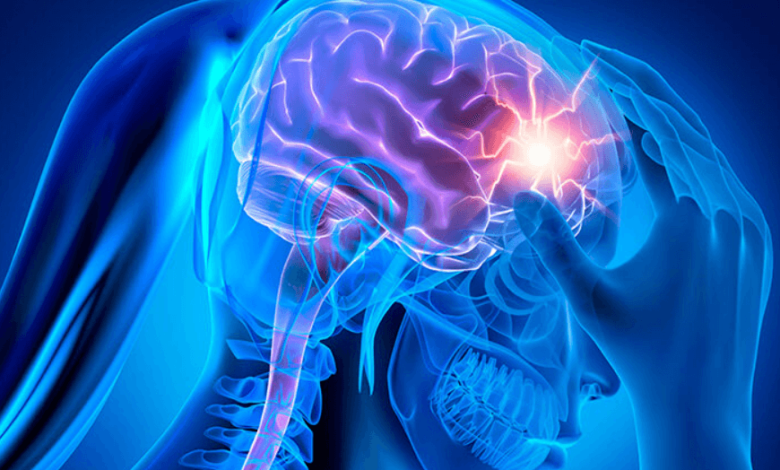Migraine: Risk Factors, Diagnosis, and Treatment

Sometimes, have you felt that your headaches have become severe, consistent, and affecting your lives? That can be due to a migraine headache. Many people tend to take it lightly. But it can be really bothersome, affecting your physical and mental well-being. With it, you can not do your day-to-day activities, which can leave you frustrated, agitated, and depressed.
Migraine headaches can affect your daily life activities. Often accompanied by other symptoms, nausea, and vomiting are the common problems it causes.
A migraine headache is a common neurological disease that affects about 12% of Americans alone. It causes a variety of signs and symptoms, the most notable of them is a throbbing, pulsing headache on one side of your head. If you have the same complaint, make sure to visit the healthcare provider. If left untreated, it can lead to various other symptoms. To get an expert opinion, you can visit the Best Neurologist in Lahore.
What Is An Aura?
An aura is a group of sensory, motor, and speech symptoms that are warning signals that a migraine headache is about to start. This condition usually happens just before an episode of migraine is about to occur. It may last from 10 to 60 minutes. Symptoms of the aura are reversible, which means these symptoms can be cured. Signs and symptoms of aura include:
- Seeing bright flashing dots, sparkles, or lights
- Blind spots
- Numbness or tingling sensation
- Changes in speech
- Tinnitus
- Temporary loss of vision
- Seeing wavy lines
- Changes in smell or taste sensation
Risk Factors
One can not predict what may cause a migraine headache. But there are a few risk factors that can increase the probability of migraine headaches. These risk factors include:
- Genetic predisposition
- Women are more prone to having migraine headaches than men
- High stress can trigger a migraine
- Smoking or excessive alcohol consumption
Signs And Symptoms
The main symptom of a migraine is a headache. Pain may be throbbing or pounding. It can be a dull headache and may shift from one side to another. Usually, it starts at a single side only, and may eventually affect your whole head. Other symptoms include:
Other symptoms of migraine headaches include:
- Sensitivity to light, noise, and odors
- Nausea and vomiting, upset stomach, and abdominal pain
- Loss of appetite
- Feeling very warm (sweating) or cold (chills)
- Pale skin color (pallor)
- Feeling tired
- Dizziness and blurred vision
- Tender scalp
- Diarrhea (rare)
- Feeling low and agitated
Diagnosis
Migraine headaches can usually be diagnosed based on the symptoms. But some other modalities can be used to diagnose migraine.
- Magnetic resonance imaging (MRI)
- Produces detailed images of the brain and blood vessels to help doctors diagnose tumors, strokes, or other related conditions that can be causing headaches. It is done to rule out migraine.
- Computerized tomography (CT) scan
- Creates a detailed cross-sectional image of the brain to help doctors diagnose tumors, infections, brain damage, or other neurological conditions. It is also done to rule out other causes of headaches.
Generally, the diagnosis of migraine headaches is made based on signs and symptoms. However, your healthcare provider might order some tests to rule out the exact cause.
Treatment
The treatment of migraine mainly aims to the prevention of the symptoms. Migraines can be treated with medications that fall into two broad categories:
- Pain-relieving medications
- Preventive medications
Medications for relief include:
- Pain relievers such as aspirin or ibuprofen
- Migraine relief medications that combine caffeine, aspirin, and acetaminophen
- Trip and (sumatriptan and rizatriptan)
- Dihydroergotamine (D.H.E. 45, Migranal). Available as a nasal spray or injection
- Lasmiditan (Reyvow)
- Ubrogepant (Ubrelvy)
- Opioid medications.
- Anti-nausea drugs (chlorpromazine, metoclopramide, or prochlorperazine).
Preventive medications
Options of preventive medications for migraine include:
- Beta-blockers such as propranolol, and bisoprolol ( If you have asthma, inform your doctor as these medications are contraindicated in it).
- Anti-seizure drugs such as valproate and topiramate
- CGRP monoclonal antibodies. Erenumab-aooe, fremanezumab-vfrm, galcanezumab-gnlm, and eptinezumab-jjmr are given monthly or quarterly by injection. The most common side effect is a reaction at the injection site.
The Bottom Line
Coping with migraine can be a real challenge because it affects your daily life activities and decreases your productivity. However, all days are not the same. Practice stress relieving exercises, know your migraine triggers, and avoid them. Take the reliever medication as soon as you feel the symptoms coming. Don’t delay that, as once it exacerbates, pain control can become even more difficult.
If you have a long-term complaint of headaches, you must consult a healthcare provider about it. To get an expert opinion, you can visit a Neurologist in karachi.




